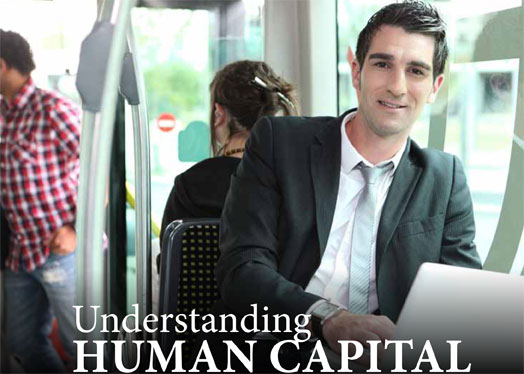By Dana Sacco
 Wikipedia says that human capital is the stock of competencies, knowledge and personality attributes embodied in the ability to perform labour so as to produce economic value. My question to optometrists and opticians who are building, nurturing and evolving eyecare practices is: do you put enough emphasis on understanding human capital in your business?
Wikipedia says that human capital is the stock of competencies, knowledge and personality attributes embodied in the ability to perform labour so as to produce economic value. My question to optometrists and opticians who are building, nurturing and evolving eyecare practices is: do you put enough emphasis on understanding human capital in your business?
Selection and recruitment based on a diploma or degree plus experience can work out well, and sometimes the talent gap in eyecare leaves us short of options. But often the skills and the personalities needed are not aligned.
Consider the financial implications of adding the wrong person to your team. The cost of a staff turnover is anywhere from 1 to 3.5 times base salary, according to ADP payroll services, one of the world’s largest providers of business outsourcing solutions.
To grow your team effectively, make sure that the people you bring on board have the core behaviours needed for longevity beyond 90 days. Is your company focused on cutting costs? Start with better “fit to role” (i.e. hire people who will naturally demonstrate the behaviours required for their specific roles with the company). Looking for an associate? Improve on boarding time (the speed at which new hires integrate into their roles) by understanding exactly how to coach and mentor new associates to success.
There are affordable, science-based methods to help you identify a person’s true core behaviours, allowing you to maximize your investment in the people you hire. The Human Capital Media (HCM) Research and Advisory Services Group recently released its findings on the annual Leadership Development survey, led by the Business Intelligence Board, Chief Learning Officer magazine. The findings, published in The Aberdeen Report (http://www.predictivesuccess.com/Free-HR-Report.html), speak to best practices in the field of human resource management and development. I have summarized the results as follows:
The report highlights how the effective use of assessments is incorporated into talent management practices in best-in-class organizations. Over 640 organizations participated in the study, more than 200 of whom used the Predictive Index® (PI®), a scientifically validated assessment that provides real-time data on people’s core personalities and behaviours.
This data allows us to compare how Predictive Index clients fare compared to best-in-class organizations and the results are impressive. Worldwide PI clients scored significantly higher in seven key areas. Two areas worth noting are:
- Over 70 per cent of PI users incorporate PI knowledge into their everyday work habits, which is 39 per cent higher than best-in-class companies. PI is more than just a recruitment tool, it helps managers become better leaders.
- 46 per cent of PI respondents can positively correlate ongoing employee performance results with using PI during the pre-hire process, which is 27 per cent higher than best-in-class companies.
The results of the Predictive Index provide managers with insight into developing better management strategies for those they work with. The result of having valid, reliable (not anecdotal) data about your people means those strategies will translate into results such as better engagement and better performance.
The Predictive Index was created by Arnold Daniels, who used Harvard-based research and an interest in organizational psychology to help the U.S. Eighth Air Force better understand the traits of fighter pilots and improve their success in the field.
After the Second World War, Daniels developed the Predictive Index, a business application that is used and taught by academic institutions, Fortune 500 companies, the manufacturing sector, sales forces and many other organizations. It helps employers maximize talent and, as business guru and author Jim Collins says, “put the right person in the right seat on the bus at the right time”.
If you are launching a business, it is crucial to have people on your team who quickly take “ownership” of building a new business. If yours is a mature business, you can design, train or coach a team to network and take the business to the next level. If you are thinking of retiring and passing the business to an associate or family member, you can prepare for that transition (succession planning) in advance.
In order to compete successfully in a global marketplace, small businesses should invest in affordable solutions that make their teams behaviourally complete and lead them to success. And the PI is one step to acquiring the power to create engaged, productive and dynamic teams.







